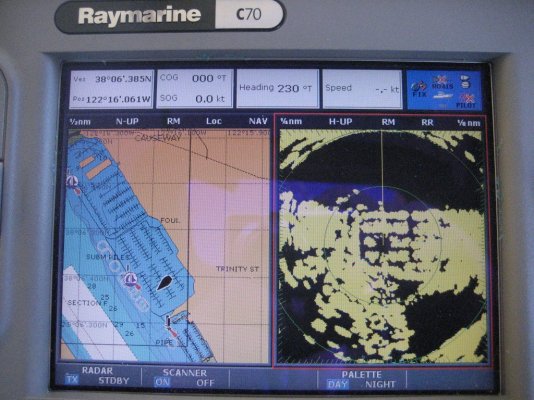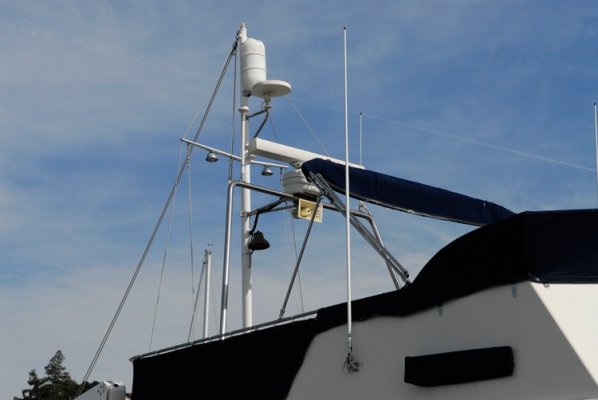I wouldn't worry too much about the little stuff on the water. Use your radar to find and avoid big stuff, that is, anything big enough to damage your prop or shaft, should you hit it. My bow will push little stuff outboard enough to miss the running gear. You should experiment with little stuff, to see how big it has to be before there is any danger that it will actually hit your running gear.
Also, radar dialed in to the closest range, if you are trying to see deadheads close aboard, in say a night crossing of any body of water, will miss everything that is just off screen, including that big fishboat that is closing at 25 knots (combined speeds) and not watching for you. (those fishboats are not required to have AIS until they reach the legislated minimum size, so your only sure way to avoid them is to find them before they find you)
Your Radar is of much greater value set on a 3 mile range than a 1/4 mile range. On anything outside of the 1/4 mile range, the circle of noise surrounding the transmitter, and the area of unswept water close to the boat, roughly the same size, are insignificant.
If you are trying to avoid the crab floats, in say Ganges Harbour, you will see them on 1/2 mile range, you will see them better on 1/4 mile range, and you will always see them long before they enter the circle of noise/unswept area close to the boat. Also, the commercial crabbers here always use sinking line and never use big fender washers or anything that would help radar visibility. They sometimes even use two gallon plastic jugs, ( I am looking at one right now) or anything that will float. The regulations here require them to be identified with the crabber's license numbers but don't prohibit any old cheap floating object from being used.
Also, radar dialed in to the closest range, if you are trying to see deadheads close aboard, in say a night crossing of any body of water, will miss everything that is just off screen, including that big fishboat that is closing at 25 knots (combined speeds) and not watching for you. (those fishboats are not required to have AIS until they reach the legislated minimum size, so your only sure way to avoid them is to find them before they find you)
Your Radar is of much greater value set on a 3 mile range than a 1/4 mile range. On anything outside of the 1/4 mile range, the circle of noise surrounding the transmitter, and the area of unswept water close to the boat, roughly the same size, are insignificant.
If you are trying to avoid the crab floats, in say Ganges Harbour, you will see them on 1/2 mile range, you will see them better on 1/4 mile range, and you will always see them long before they enter the circle of noise/unswept area close to the boat. Also, the commercial crabbers here always use sinking line and never use big fender washers or anything that would help radar visibility. They sometimes even use two gallon plastic jugs, ( I am looking at one right now) or anything that will float. The regulations here require them to be identified with the crabber's license numbers but don't prohibit any old cheap floating object from being used.





